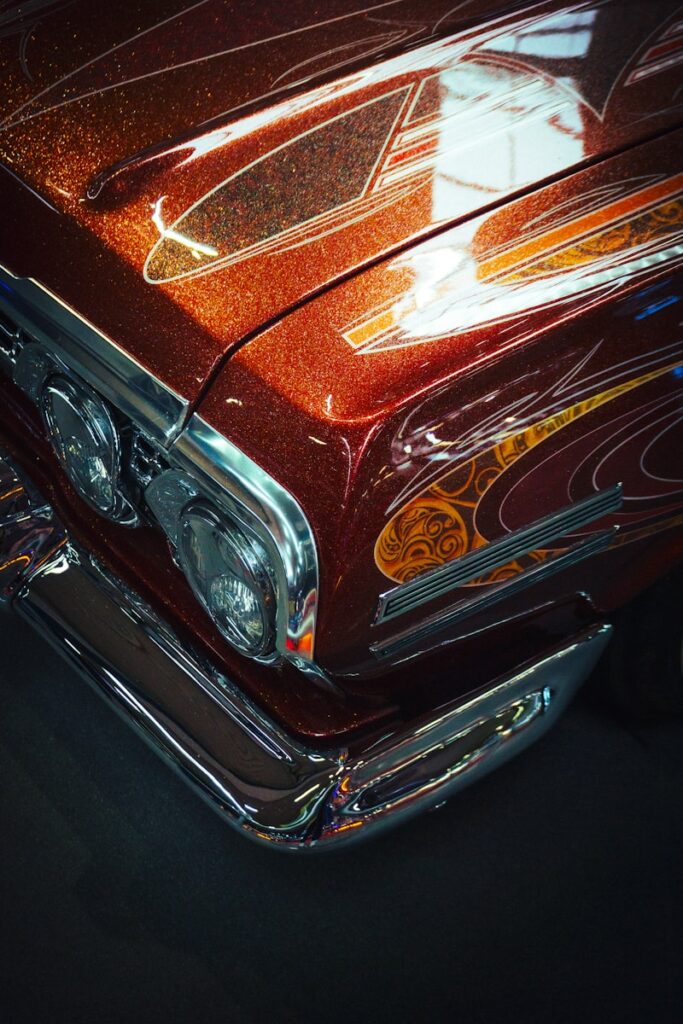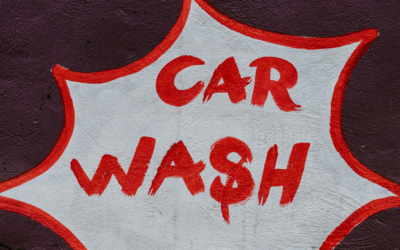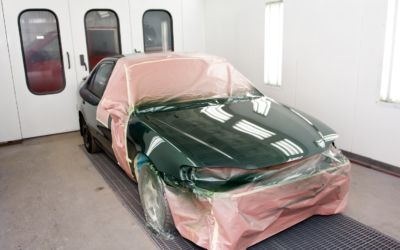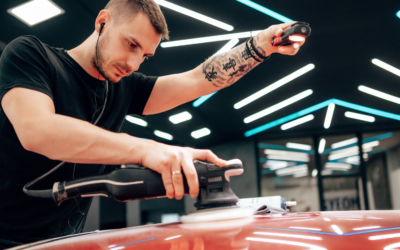How often should you wax your car?
Your car’s paint endures constant assault from UV rays, bird droppings, tree sap, road salt, and countless other contaminants. Without proper protection, that once-pristine finish can quickly deteriorate, leaving you with faded paint and diminished resale value. Car wax serves as your vehicle’s first line of defense, but knowing how often to apply it can be confusing.
The frequency of car waxing depends on several factors including your driving conditions, parking situation, climate, and the type of wax you choose. Most automotive experts recommend waxing your car every three to four months, though this timeline can vary significantly based on your specific circumstances.
Understanding the right waxing schedule for your vehicle will help maintain that showroom shine while protecting your investment for years to come. This comprehensive guide will walk you through everything you need to know about car waxing frequency, from choosing the right products to developing a maintenance routine that works for your lifestyle.
Understanding Car Wax and Its Purpose
Car wax creates a protective layer between your vehicle’s paint and environmental contaminants. This barrier shields the clear coat from UV damage, prevents fine scratches from washing and drying, and makes it easier to remove stubborn substances like bird droppings and tree sap.
Traditional waxes contain carnauba, a natural substance derived from Brazilian palm leaves. These products provide excellent shine and water beading but typically last only two to three months. Synthetic polymer waxes offer longer-lasting protection, often extending four to six months between applications, though they may not provide the same deep, warm glow as carnauba-based products.
The protective layer that wax provides isn’t permanent. Weather conditions, regular washing, and daily driving gradually wear away this coating. When the wax layer deteriorates, your paint becomes vulnerable to damage from contaminants that can permanently stain or etch the surface.
Factors That Determine Waxing Frequency
Parking and Storage Conditions
Where you park your car significantly impacts how often you should wax. Vehicles stored in garages require waxing less frequently than those parked outside. Direct sunlight breaks down wax more quickly, while covered parking protects both the wax and the underlying paint.
Cars parked under trees face additional challenges. Tree sap, falling leaves, and increased bird activity all contribute to faster wax degradation. If your vehicle regularly sits beneath trees, consider increasing your waxing frequency to every two to three months.
Climate and Weather Conditions
Extreme temperatures accelerate wax breakdown. Hot climates cause wax to soften and wash away more quickly, while cold temperatures can make wax brittle and less effective. Areas with high humidity, frequent rain, or salt air exposure also require more frequent waxing.
Winter driving presents particular challenges. Road salt and de-icing chemicals are highly corrosive and can quickly compromise your wax layer. If you drive regularly in winter conditions, plan to wax your car before the season begins and consider a mid-winter touch-up if conditions are severe.
Driving Habits and Mileage
Highway driving exposes your vehicle to more wind, debris, and temperature fluctuations than city driving. Long commutes or frequent road trips mean your car encounters more contaminants that can degrade the wax layer.
Stop-and-go traffic in urban environments creates different challenges. Brake dust, exhaust fumes, and industrial pollutants can accumulate on your vehicle’s surface, requiring more frequent protection renewal.
Vehicle Age and Paint Quality
New cars with factory-fresh paint often hold wax longer than older vehicles with weathered surfaces. However, new car owners should establish a waxing routine early to prevent damage rather than trying to repair it later.
Older vehicles with compromised clear coats may need more frequent waxing to compensate for reduced natural protection. Fine scratches and paint imperfections can also cause wax to wear away more quickly.
Types of Car Wax and Their Longevity
Traditional Carnauba Wax
Carnauba wax delivers unmatched depth and warmth to your car’s finish. This natural product creates beautiful water beading and provides excellent protection against UV rays. However, carnauba wax typically lasts only two to three months, requiring more frequent reapplication.
Apply carnauba wax in thin coats for best results. A thick application can create streaking and make removal difficult. Work in small sections, allowing the wax to haze before buffing to a shine.
Synthetic Polymer Wax
Synthetic waxes offer superior durability, often lasting four to six months under normal conditions. These products bond more effectively to paint surfaces and resist breakdown from washing and weather exposure.
While synthetic waxes may not provide the same visual warmth as carnauba, they offer practical advantages for daily drivers. Many synthetic formulations include UV inhibitors and anti-static properties that help repel dust and dirt.
Spray Wax and Quick Detailers
Spray wax products provide convenient touch-up protection between full wax applications. These quick detailers are perfect for maintaining that freshly waxed surface appearance and can extend the life of your primary wax coating.
Use spray wax after each wash or weekly for vehicles parked outside. While these products don’t replace traditional waxing, they help maintain protection and shine between major applications.
Cleaner Wax Products
Cleaner wax combines mild abrasives with protective wax in a single product. These formulations remove light oxidation and surface contaminants while applying a protective layer. Cleaner wax is ideal for vehicles that haven’t been waxed recently or show signs of surface contamination.
Be cautious with cleaner wax frequency, as the abrasive components can gradually thin your clear coat if overused. Reserve these products for quarterly applications or when your paint shows visible contamination.
Top Car Wax Products and Brands
Choosing the right car wax is essential for giving your vehicle the protection and shine it deserves. Below is a list of seven highly rated car wax products and brands, complete with links to the manufacturer’s website for easy purchasing.
Meguiar’s Ultimate Liquid Wax
A synthetic polymer wax that delivers a deep, glossy finish while providing long-lasting protection.
Turtle Wax ICE Seal N Shine
Known for its ease of application and durable hydrophobic protection that keeps water off your car’s surface.
Chemical Guys Butter Wet Wax
Ideal for those seeking a natural shine with carnauba-based wax that enhances depth and luster.
P21S Carnauba Wax
A premium carnauba wax offering a deep, natural shine without leaving behind any white residue.
Collinite No. 845 Insulator Wax
Known for its durability and ability to withstand harsh weather conditions while maintaining a radiant finish.
Griot’s Garage Best of Show Wax
A high-quality wax specifically formulated for enhancing color and depth, perfect for car enthusiasts.
Mother’s California Gold Pure Carnauba Wax
A bestseller offering superior protection and warmth in shine, perfect for all paint types.
These options cater to a variety of needs and preferences, ensuring there’s a perfect product for every driver. Remember to always follow the manufacturer’s instructions for best results.

Creating Your Waxing Schedule
Seasonal Approach
Many car enthusiasts follow a seasonal waxing schedule, applying fresh protection four times per year. This approach ensures consistent coverage through changing weather conditions and makes waxing part of regular seasonal maintenance.
Spring waxing prepares your vehicle for increased UV exposure and summer heat. Summer applications protect against intense sun and frequent washing. Fall waxing creates a barrier against falling leaves and increased moisture, while winter preparation protects against salt and harsh weather.
Monthly Maintenance
For show cars or vehicles requiring maximum protection, monthly waxing provides superior paint preservation. This schedule works well for classic cars, luxury vehicles, or cars in harsh environmental conditions.
Monthly waxing typically involves alternating between full wax applications and spray wax touch-ups. Apply traditional or synthetic wax every other month, with spray wax maintenance in between.
Quarterly Standard
Most vehicles benefit from quarterly waxing, providing adequate protection without excessive time investment. This schedule works well for daily drivers in moderate climates with covered parking.
Adjust quarterly timing based on seasonal changes. Wax before summer heat intensifies, prior to fall weather changes, before winter salt exposure, and after winter to remove accumulated contaminants.
Proper Waxing Technique for Long-Lasting Results
Surface Preparation
Always start with a clean canvas. Wash your car thoroughly with quality car wash soap, paying special attention to removing all dirt, bugs, and surface contaminants. Consider using a clay bar treatment if the paint feels rough or contaminated.
Ensure your vehicle is completely dry before applying wax. Work in shade and avoid waxing in direct sunlight or on hot surfaces. Hot paint causes wax to dry too quickly, making removal difficult and potentially leaving residue.
Applying Wax
Apply wax in thin, even coats using circular motions or straight lines, depending on product instructions. Work on one section at a time, typically a 2×2 foot area, to ensure even coverage and prevent the wax from drying too much before removal.
Allow the wax to haze according to manufacturer directions, usually 5-10 minutes depending on temperature and humidity. The wax should appear cloudy and feel dry to the touch when ready for removal.
Removal and Finishing
Use clean, dry microfiber cloths to remove wax residue. Turn the cloth frequently to avoid redistributing removed wax back onto the surface. Work in the same pattern used for application, maintaining consistent pressure.
Inspect your work in different lighting conditions to ensure even coverage and complete removal. Address any streaking or residue immediately while the surface is still workable.
Signs Your Car Needs Fresh Wax And A Clean Canvas
Water Beading Test
Fresh wax causes water to form tight beads that roll off the surface easily. When wax protection deteriorates, water begins to sheet across the paint rather than beading. If you notice decreased water beading after washing, it’s time to reapply wax.
Perform this test regularly by spraying a small amount of water on different areas of your vehicle. Consistent beading across all surfaces indicates good wax coverage, while areas showing poor beading need attention.
Visual Inspection
A freshly waxed surface should reflect light evenly and show deep, clear reflections. As wax protection fades, paint may appear dull or lose its depth. Surface contamination becomes more visible as the protective layer deteriorates.
Look for areas where dirt and grime seem to stick more readily. These spots often indicate wax failure and vulnerability to permanent staining or etching.
Touch Test
Run your hand across the paint surface after washing and drying. Properly waxed paint should feel smooth and slick. Rough or sticky areas suggest wax depletion and potential surface contamination that could lead to scratching during future washing.
Maximizing Protection Between Wax Applications
Regular Washing Routine
Maintain your wax protection through gentle, regular washing with appropriate car wash soap. Avoid dish detergents or household cleaners that strip wax and can damage paint. Use the two-bucket method to minimize scratching and preserve your protective layer.
Rinse thoroughly before washing to remove loose dirt and debris. Work from top to bottom, rinsing your wash mitt frequently to prevent contamination from spreading across the surface.
Quick Detailer Maintenance
Apply spray wax or quick detailer products weekly or after each wash to maintain surface protection and enhance shine. These products help extend the life of your base wax coating while providing additional UV protection and water repelling properties.
Use quick detailers on cool, shaded surfaces for best results. These products work well for removing light dust, fingerprints, and water spots between full washing sessions.
Covered Parking Benefits
Whenever possible, park your vehicle in covered areas to reduce UV exposure and environmental contamination. Even partial shade can significantly extend wax life and protect your paint from premature aging.
Consider portable covers or shade structures if permanent covered parking isn’t available. The investment in protection often pays for itself through reduced maintenance needs and preserved resale value.

Professional Waxing At Fusion Car Wash vs. DIY Waxing
Professional Car Detailing Services
Professional detailing services like the wash packages at Fusion Car Wash offer expertise, commercial-grade products, and time savings. Many car detailing facilities use advanced sealants and ceramic coatings that provide longer-lasting protection than consumer-grade waxes.
Professional application ensures even coverage and proper technique, potentially extending the time between treatments. Consider professional service for paint correction needs or when applying specialized coatings that require specific skills.
DIY Benefits and Considerations
Home waxing allows you to maintain your vehicle on your schedule while developing familiarity with your car’s specific needs. Quality consumer products from auto parts stores can provide excellent results when applied correctly.
DIY waxing requires proper tools, techniques, and time investment. Factor in the cost of quality products, microfiber cloths, applicators, and other supplies when comparing to professional services.
Common Waxing Mistakes to Avoid
Over-Application Issues
Applying wax too thickly wastes product and makes removal difficult. Thick wax applications can leave residue, create streaking, and actually reduce the protective benefits you’re trying to achieve. Remember that thin coats provide better protection and appearance than thick applications.
Environmental Timing Errors
Waxing in direct sunlight, on hot surfaces, or during humid conditions can compromise results. High temperatures cause wax to dry too quickly, while humidity can prevent proper curing. Choose appropriate weather conditions for best results.
Neglecting Surface Preparation
Applying wax over dirty or contaminated surfaces traps debris against your paint and reduces wax effectiveness. Always start with proper washing and consider clay bar treatment for heavily contaminated surfaces.
The Investment Value of Regular Waxing
Regular waxing preserves your vehicle’s resale value by maintaining paint quality and preventing costly damage. The relatively small investment in wax and time pays dividends when selling or trading your vehicle.
Consider the cost of paint correction services, which can range from hundreds to thousands of dollars, compared to the minimal cost of preventive waxing. Most people find that consistent protection costs far less than corrective treatments.
A well-maintained vehicle with protected paint also provides personal satisfaction and pride of ownership. The enhanced appearance and easier cleaning that comes with regular waxing makes every drive more enjoyable.
Maintaining Your Car’s Protective Shield | How Often Should You Wax Your Car
Determining how often to wax your car requires considering your specific driving conditions, parking situation, and personal preferences. Most vehicles benefit from waxing every three to four months, though harsh conditions or show car standards may require more frequent applications.
The key to successful car care lies in consistency rather than perfection. Establish a routine that fits your schedule and stick to it. Regular waxing, combined with proper washing techniques and protective parking when possible, will keep your vehicle looking its best while preserving its value.
Remember that car wax is just one component of comprehensive vehicle care. Regular maintenance, gentle washing practices, and attention to environmental factors all contribute to long-lasting paint protection. Start with a quality wax application today, and develop the habits that will keep your car looking showroom-fresh for years to come.
Learn the optimal car waxing frequency based on your driving conditions, climate, and wax type. Expert tips for maximum paint protection and shine.







